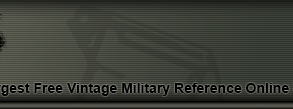|
1944 WWII JAPANESE ARMY KATANA SWORD - 24 -
At the end of WWII, the Japanese people were forbidden to own swords. many of them surrender them to the American
troops where the GI's had the opportunity to pick them and bring them back to the states as war souvenirs.
Since those days the appreciation for the craftsmanship and beauty of the Samurai sword has increased year by
year. Turning the sword into one of the most sought after military antiques. The Katana was developed during
the Momoyama period in Japanese history. The length of the sword allowed the warrior to fight from horseback.
The curve in the blade facilitated a slashing motion.
The item featured here is a Japanese Katana Samurai sword. It was manufactured during WWII. It appears to
be all complete. It is mounted in the traditional WWII Japanese Army dressing.
The fittings on this sword are very nice. The blade shows normal wear. It retains the original polish which was
done in the WWII period.
The scabbard of the sword has an outer metal shell which is painted brown. The inside consists of a wooden insert.
A band is placed near the throat section. It is very sturdy and holds a single suspension ring. The tip of the
scabbard has a drag.
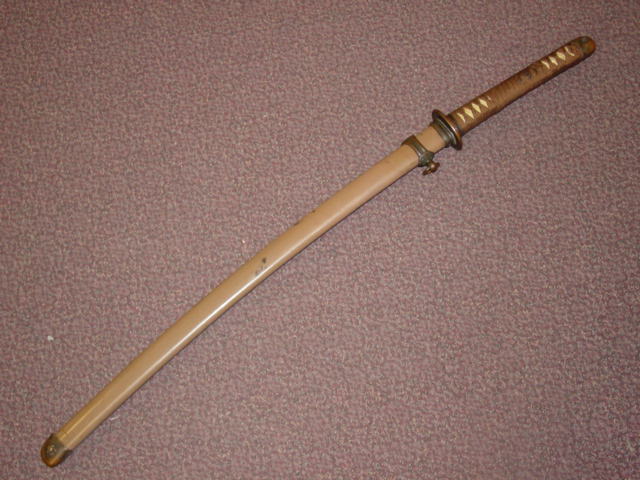
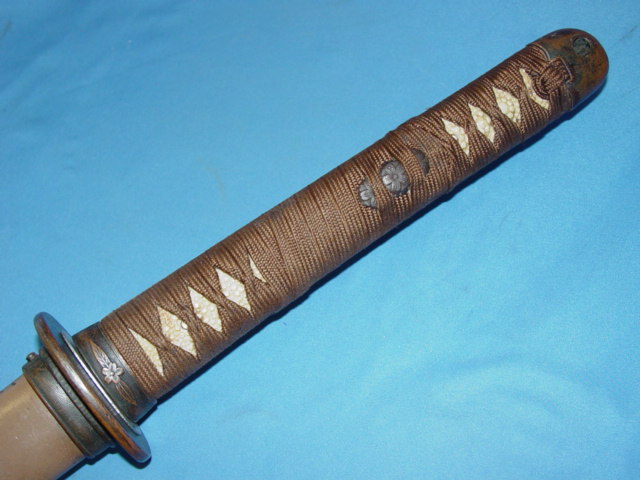
The handle in this sword remains tight. It has not been loosen with use. Shark or Ray skin is used to line
under the cloth wrappings. The Menuki were used to adorn each side of the handle. Their placement was roughly
at the center of the handle. The Menuki is of the three flower design.
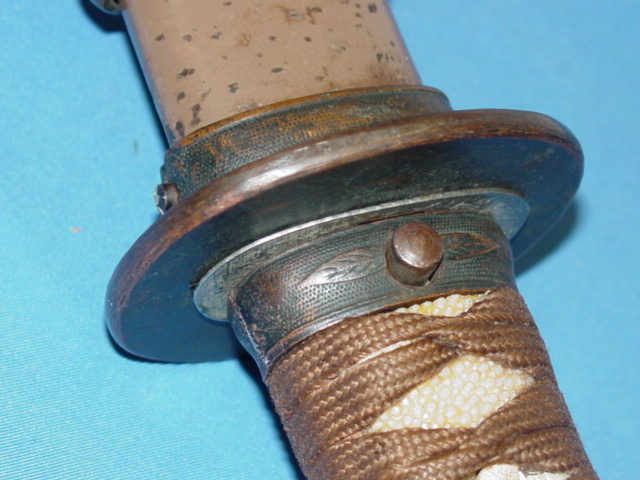
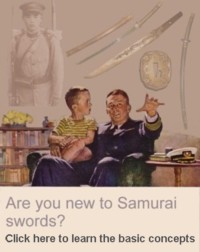
|
The Samurai sword has a very rich history. The sword has been manufactured for several centuries and continues
to be produced today. The sword represented more than just a weapon. It was the soul of the Samurai warrior.
When attempting to identify the type of sword you have It is important to keep in mind that the fittings of
a sword (scabbard, handle, crossguard. etc.) may be identical from one sword to another. The reason why is
because during WWII the same fittings were used in all Army swords, Navy swords, etc. Armed forces are all
about uniformity. They strive to make everything the same.
This is the reason why a sword cannot be identified merely by its external appearance.
Understanding the different components that make up the Samurai sword is the first step in figuring out the
type of sword you have. That is the reason why we have created the
Understanding the Samurai sword section as a means to
provide a novice with the basic knowledge to start the path of determining the questions everyone has;
who made the sword, how old it is nad how much it is worth.
|
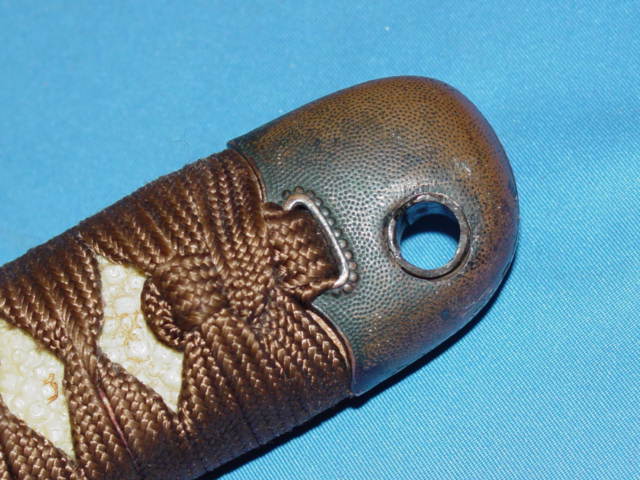
The top of the handle is capped with a piece of metal. Their design can range from simple to very ornate. In this
sample it is nicely pebbled. A hole is found on the cap. The lanyard ring is secured to this hole.
The fittings of the sword were normally created by craftsmen who specialized in the making of the part. The
blade smith would not be the one making the scabbard, or Tsuba, etc.

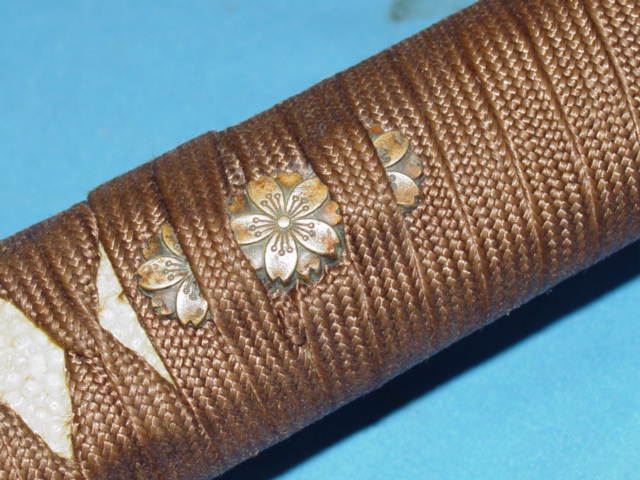
|
This page is a recognition and identification guide for Samurai swords.
Multiple detailed photos of a specific sample are provided. Descriptions point
out clearly defined points that should be noted.
One of the most commonly asked questions is "How much is my Samurai Sword worth?".
A price guide is included here to address this question. The value of the swords is
reviewed over a period of several years. A trend can be observed. The present worth
of the edge weapons in the collector's market is illustrated.
This service is provided free of charge to the visitor/enthusiast courtesy of
MilitaryItems.com,
a company dedicated to the preservation of military history and to providing quality
military antiques and collectibles to museums, institutions and the general public.
|
|
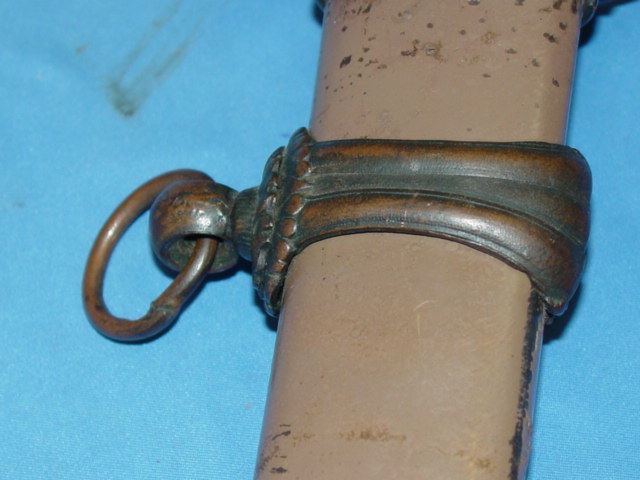
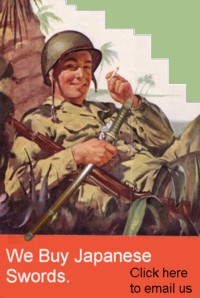
|
WE BUY JAPANESE SWORDS - All types of Japanese edge weapons. Whether it is a WWII era Samurai sword or an
older type of blade.
The process gets started by you sending us an
Email .
We will respond to your inquiry normally within 24 hours and in many cases much faster.
We can tell you what you have, what it is worth and how much we can pay you.
One sword or an entire collection -
Email Us .
|
 |
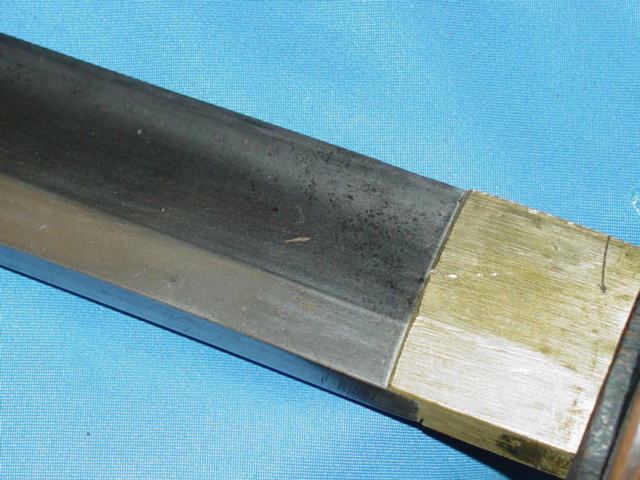
The length of this sword is approximatelly 37 inches. This measure was performed with the sword inside the
scabbard. the typical length of the blade (from the top of the tang, with the handle off, to the tip) was
between 25 inches to 30 inches.
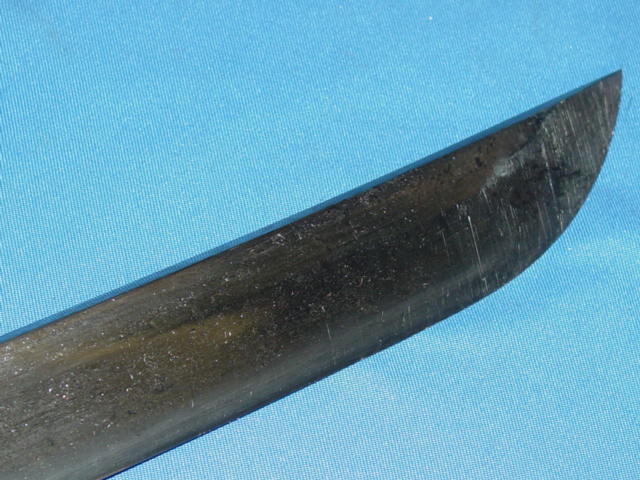
The Tang of the sword contains a great deal of information. This particular sword has a
Tang that has been signed on both sides.
The following photo shows the side where the manufacturing information has been recorded.
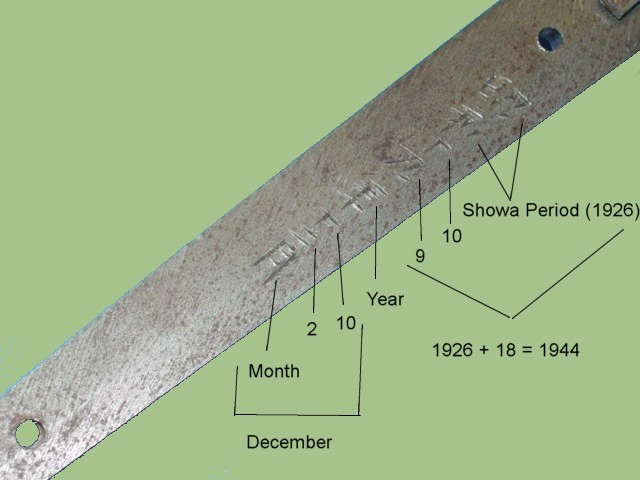
the translation of the date markings confirm that this is a Showa blade (WWII time period). The blade was made on
December of 1944.
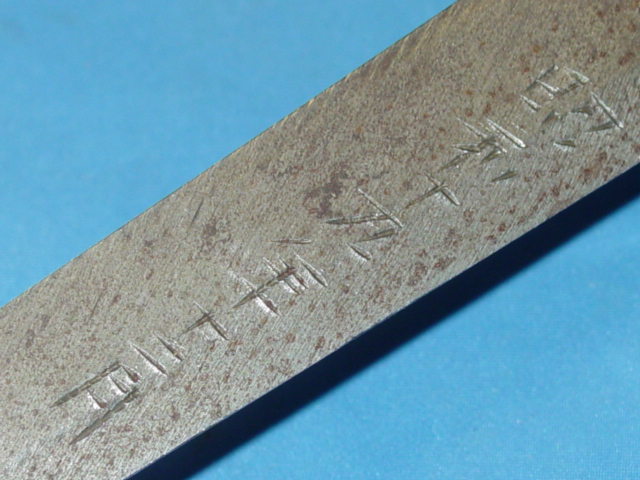
The other side of the Tang has the master's signature.
The swordsmith signed the sword once it was determined that it met the quality standards set by the school where
the sword was forged. The size and shape of the Tang are indicating factors of which school produced the sword.
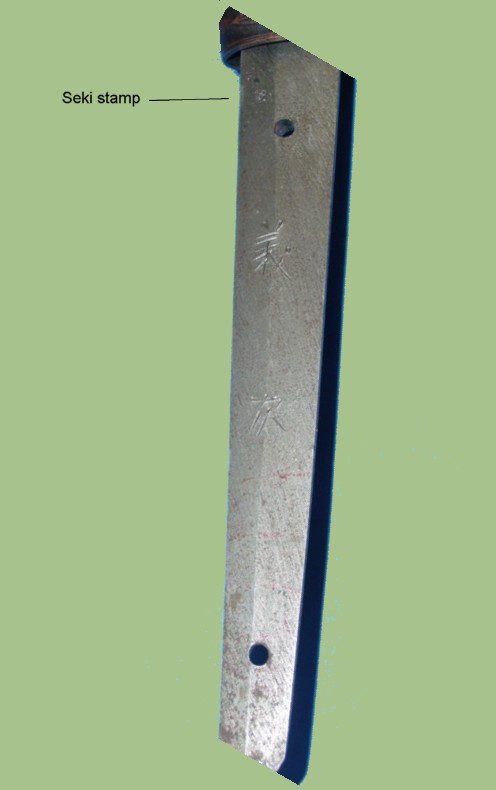
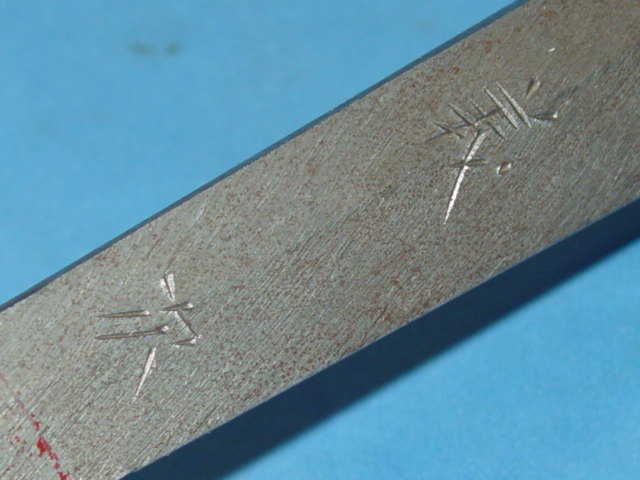
By the Numbers
It is next to impossible to determine the exact number of Samurai swords that were produced and issued to
Japanese soldiers during the war. However, thanks to the record keeping maintained by the US Armed Forces,
it is possible to estimate how many swords were actually shipped home.
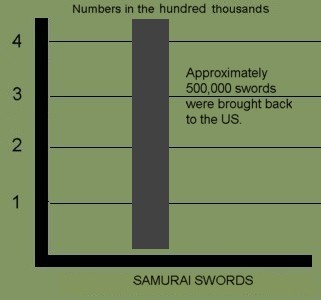 |
There were over 500,000 Samurai swords were brought back home as souvenirs from the war.
There are several caviats to this number.
|
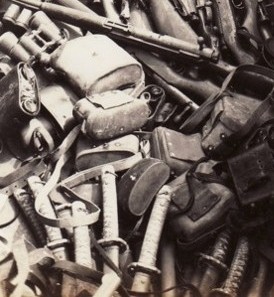 |
For example, some soldiers took souvenirs and shipped them home circumbenting the established process.
Some of the swords were brought back inside duffle bags without anyone knowing except for the soldier who
captured the sword. This fact would clearly affect the final count.
The number also does not account for swords that were taken by Allied soldiers from other countries.
Collecting Samurai swords
Collecting Samurai swords is a field that has been growing since the days the GI's rummaged around Asia
bringing back military souvenirs. Japanese soldiers carried many of these swords when they went to
battle. Once the soldier was killed or captured, the Americans would take the edge weapons as war trophies.
Eventually all these pieces came back to the United States where military history enthusiasts began to collect them.
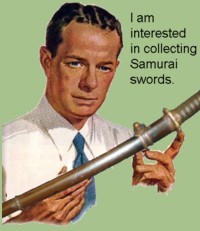 |
In trying to determine if you should collect Samurai swords there are certain factors that should be
considered.
The adjacent table outlines some of the advantages and disadvantages of collecting the Samurai swords.
|
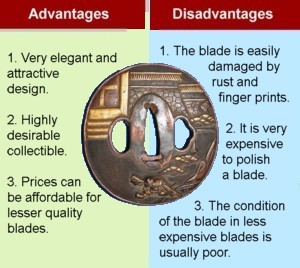 |
This Samurai Sword may be currently reproduced.
It is becoming more difficult to be able to tell the fake ones from the real ones because
the quality of the reproductions is improving. The collector must become familiarized with
the construction style and materials employed in the manufacturing of this item.
Attention to the details is critical in order to be able to determine the authenticity of
the collectible.
If you have an interest is seeing other Japanese Samurai swords, you can do so by going to our
Japanese Samurai Swords Price Guide
identification guide. Where we cover Samurai swords from all periods.
| 

